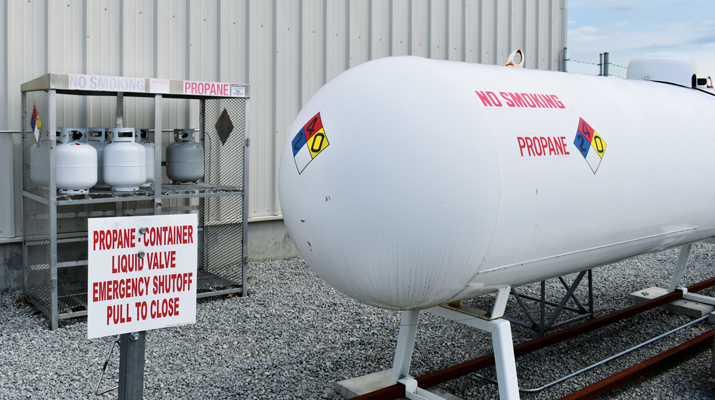Steps to conduct a pre-fill container inspection
A propane container, whether an ASME tank or DOT cylinder, must be visually inspected prior to being filled. This inspection takes only a few minutes and goes far to ensure safety.

Photo by LP Gas staff
As you approach the container, observe the following:
- The container must be located a proper distance from an important building, driveway or source of ignition. Refer to NFPA 58 2020 Section 6.4 and Annex I.
- Look for building additions and ignition sources added after the container was installed.
- The container must be sitting level on a firm foundation such as concrete blocks or a paved surface.
- Observe the container for signs of leaks such as odor, hissing noise, oil residue or insects.
- There must be no corrosion, dents, digs, gouges or abrasions, and the dome and legs (or collar and foot ring) must be securely attached.
- The ASME container data plate must be securely affixed to the container and legible. A DOT container must have a current requalification marking.
- All container appurtenances must be in place, leak-free and operating properly.
- Regulators must be secure under cover with the vent facing down. Second-stage regulators must be vented a proper distance from building openings and ignition sources.
- Yard lines must be properly buried and aboveground piping secure.
The container is the backbone of the installation. Never service a defective container.
Keep your eyes on safety.
Read more:
- Safety minute: Confirming odorant in propane
- Know the basics of a new piping pressure test
- Complete thorough system leak checks
- Make a habit of propane forklift safety
- 10 safety checks to complete during the off-season
Benny Gay is vice president of operational support at ThompsonGas. He can be reached at bennygay@thompsongas.com.
















